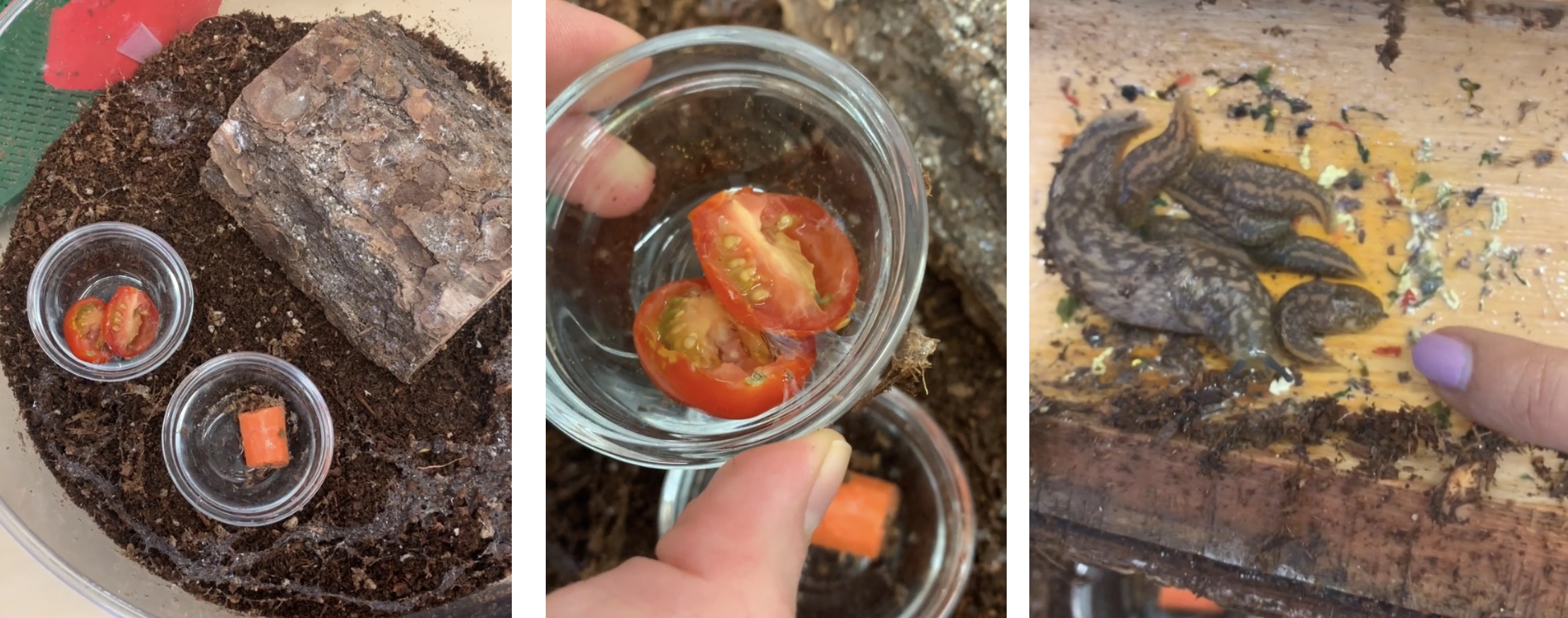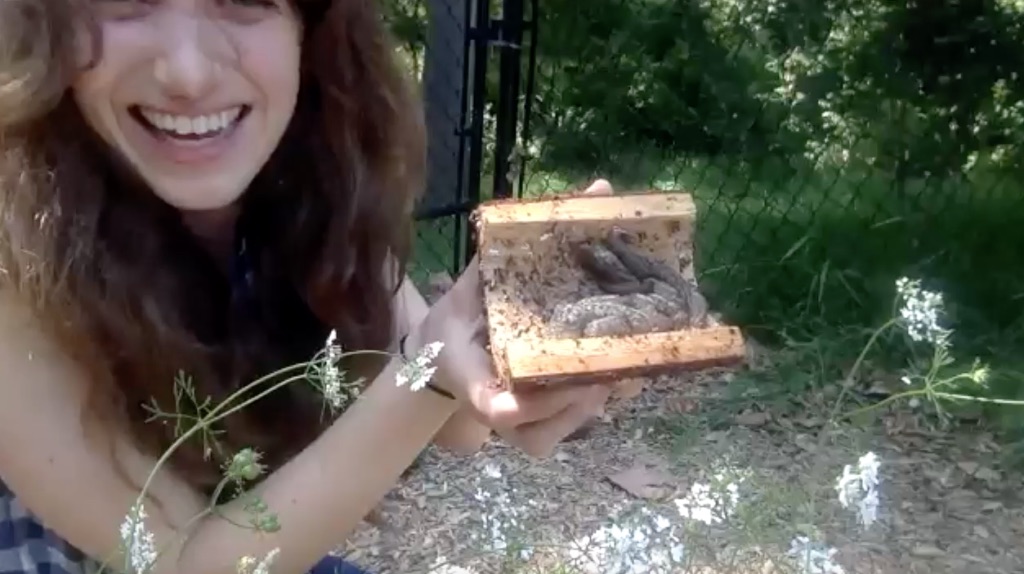One day (right before the pandemic), our students found a slug in the play yard and asked if we could keep it as a class pet. We found ourselves going along with the idea, and named our new class pet Sluggy. Things got really interesting once we settled Sluggy into our classroom- students began to observe Sluggy, and grew fascinated with everything Sluggy did. The interest and curiosity of getting to know Sluggy then led to reflective questions which became the center of all our inquiry and learning. We even set up a designated station in our classroom, where we could invent different ways to measure Sluggy, and observe it’s slime, characteristics, and features. In a way, we built a small laboratory within our classroom space that was dedicated to taking care and learning all about slugs. So when the pandemic led to the closure of our school, we wanted to find a way to preserve the curious, inquisitive, and reflective spirit of learning about Sluggy during remote instruction.
An essential part of engaging in inquiry is the sense of ownership students have in their learning. This was strongly woven into our classroom culture as we not only took care of Sluggy, but learned and researched everything we could about slugs. When we moved to remote instruction, we brought Sluggy home with us. By then, Sluggy had laid eggs and we had an entire family of slugs to observe and learn from. One of the things the class grew interested in was what slugs needed to survive. This led us to engage in a series of science experiments, where we tested our hypotheses on what slugs ate

We first made a list of various produce and natural materials that we predicted slugs ate (e.g. tomatoes, grapes, lettuce, dirt, oatmeal, etc.). We then video recorded ourselves placing these foods with the slugs and then recording what seemed to have been eaten by Sluggy and it’s family the next day. We first started with tomatoes vs. carrots and placed both foods with our slug family. We then checked with the slugs and noted in our videos if we noticed if either of the foods seemed eaten or touched by the slugs (e.g. is there slime on the tomato? Does the tomato seem eaten?). We also checked for any slug poop, and noted if there were any evidence of either tomatoes or carrots in our videos.

Over time, we continued to video record ourselves as we compared various foods on our list by observing the food and our slugs’ poop. During our zoom sessions, we would play and look over these videos and discuss and vote to make conclusions, predictions, and decisions for what we should test for next. Even though we (the teachers) were the agents who conducted and recorded the experiments, the ideas all belonged to the students, and in the end, the experiments were guided by their own predictions and curiosities. For example, one of our students didn’t agree with us that slugs preferred oatmeal to lettuce. The next day, she had her father email me with her idea- that she thought that oatmeal made more poop than lettuce, and that the only way to be sure if slugs preferred oatmeal was to re-test the hypothesis with equal amounts of both foods.
We were fortunate that before our school closed, that our students collectively discovered and grew curious about Sluggy. Once we moved to remote instruction, we really adapted our curriculum to reflect their questions and interests. From there, it was really about us organizing and carrying out our students’ interests. Towards the end of the school year, we began to debate the ethics behind keeping Sluggy. We decided that it was best for Sluggy and the family of baby slugs to be released back into our yard. So Ms. Parkes got permission to come on campus, and she zoomed with the entire class as she released the slugs back in the play yard.

Inquiry can start in small, unexpected, and humble ways. For us, we found a slug in the yard, that became a primary source to use throughout the entire inquiry process. The fact that children had a relationship with Sluggy made it more meaningful than reading about slugs in books and videos. Not only was the pursuit of knowledge, questions, and observations of Sluggy part of our daily routine, but the daily experience of caring and getting to know Sluggy became a personalized experience that continued to thrive and live on as we ventured into remote instruction. This experience then helped children to view the world in a new light, as they ventured into their own neighborhoods and notice the life around them even in a time when we’re far apart.